Whether it's an improperly closed door, or the dreaded check-engine alert, dashboard warning lights are how your car communicates with you when something goes wrong.
They light every time you start your vehicle, illuminated briefly as your car or truck warms up and makes sure all systems are safe and ready to go. Occasionally one light might stay on, indicating there’s a problem. Be equally alert if one or more warning lights don’t briefly illuminate. If they aren't functioning, you might not be able to detect a problem they'd warn you about.
But if you don't understand what a warning light means—or choose to ignore it—a small problem could turn into a bigger, more expensive, and potentially dangerous issue. And even the savviest car owner can have trouble deciphering the message a warning light is trying to convey.
"They're all so different and cryptic, it makes it easy for most people to ignore them,"
Raul Arbelaez, vice president of the Insurance Institute for Highway Safety's Vehicle Research Center, said. "I think vehicles today tend to be so good, and reliable, and smooth driving, that for many people you can ignore [dashboard warning lights] for a while and still get a very good driving experience. Until you don't."
A career spent conducting crash tests and researching automobile safety gives Arbelaez unique insight into how cars protect their occupants. Yet, as vehicles grow increasingly complex, it's the human factor that can present hurdles. "People often really don't understand this highly complex device they're motoring around in at very high speeds," Arbelaez said. "How many people do you know read the owner's manual? Very, very few."
According to Matt Anderson, curator of transportation at the Henry Ford Museum in Dearborn, Michigan, one of the earliest dashboard warning lights was found in a 1933 Hudson.
Anderson points to a page in a 1933 Hudson Super Six owner's manual in which a generator warning light is referred to as "the red jewel" on the car's dashboard. The manual advises the light should turn off once the car reaches a speed just above idle. Should it start flashing while traveling above 20 mph, it means the battery isn't being charged. "At this point," according to the manual, "your electrical system should be checked by your Hudson dealer."
So, nearly 90 years ago, our cars were already trying to tell us when something was wrong. To make up for lost time and past misunderstandings, let's explore some of the most common dashboard warning lights and what each one means.
CHECK ENGINE:
We'll start with the worst. The check-engine light is the one car owners hate most. Usually, this warning is in the shape of a silhouetted engine, though sometimes it's an even harder to miss all-caps "CHECK ENGINE" message.
While it seems like the scariest, this light is one the most ambiguous because it relates to anything having to do with the car's motor and emissions system. The potential issue could be as minor as a loose wire, an ill-fitting gas cap, or worn solenoid. Or it could mean something far more serious is wrong in the heart of the engine itself.
If the check-engine light illuminates while you're driving and everything seems fine with the car, don't panic, but don't ignore it, either. Get the vehicle to a mechanic to run a diagnostic test and source the problem. Since 1996, every new car and light-duty truck sold in the U.S. has been legally required to have an On Board Diagnostic system (OBD). This is a computer that monitors emissions levels and other vital engine components. With an OBD scan, sourcing a problem is easier—something as simple as tightening the gas cap might solve the issue. This also prevents an emissions-spewing vehicle from operating without the driver knowing there’s a problem lurking under the hood.
Should the light turn on and the vehicle suddenly begin operating erratically or making strange noises, pull over immediately and call for a tow. This means there’s a far more serious problem, such as a misfire that could permanently damage the car’s engine. Ignoring a blinking check-engine light could mean putting yourself at risk, and ruining your car’s powertrain.
BATTERY:
The battery warning is easy to decipher because it looks exactly like the thing that needs attention. For many car owners, this light conjures up the heart-sinking "whir whir whir" sound of a vehicle trying to start with a flat battery. Don't be fooled if the battery light illuminates but the car starts up and drives normally. There could be a long-term issue with the battery itself, or potential problems with the vehicle's wiring, alternator, or other electrical components.
COOLANT TEMPERATURE:
Looking like a thermometer taking a dip in the ocean, the coolant temperature warning lets you know your car is running too hot. This could be caused by a broken water pump, low coolant levels in the radiator, a leaking or burst coolant hose, or even damage to the radiator itself. These are serious issues and could lead to much bigger engine problems if ignored. Like a blinking check engine light, driving an overheated car is not only unsafe, it also risks permanently ruining your four-wheeled mode of transportation.
TRANSMISSION TEMPERATURE:
This indicates the internal pieces of your gearbox are reaching a critical point. This might be caused by excessively heavy towing, low transmission fluid levels, or, more seriously, excessive wear on the inner workings of the transmission.
OIL PRESSURE WARNING:
Winning the award for best throwback dashboard warning light, an oil can (complete with a drop of oil coming from it). An illuminated oil pressure light could indicate something as simple as your car telling you it needs its oil topped off. More seriously, it could mean a leak in the engine, or worn parts like a blown piston ring or broken oil pump. If the engine's dipstick shows oil levels are low and adding oil turns the light off, then you're in luck. If that doesn't do the trick, or the light comes on shortly after you've added oil, it's smart to get the issue checked as soon as possible. Driving for extended periods with an oil pressure warning light illuminated is another sure-fire way of causing big repair bills down the road. Like the gasoline sloshing around in the fuel tank, your car’s oil level is equally essential to keeping your vehicle running.
TIRE PRESSURE MONITORING SYSTEM:
This light looks like two-thirds of a circle with an exclamation point in the middle. Those little lines across the bottom are meant to symbolize the tread of a car tire. Cute, right? Unfortunately, things can get ugly if you're driving on severely under- or overinflated tires. In many modern cars, the tire pressure monitors include a display in the driver's gauges, or in a menu located within the infotainment system, to tell the driver the exact tire pressure at each wheel. As an example, if one tire shows significantly less air pressure than the others, stop the car and refill the tire to the correct pressure rating. Start the car and see if the warning light goes off after a few minutes. If it doesn't, there could be damage to the tire that's causing a rapid leak.
BRAKE SYSTEM:
We all love to talk about how quickly a car accelerates from zero to 60 mph. But things can get dicey if a vehicle doesn’t come to a quick and controlled stop when the brakes are engaged. A common mistake occurs when the driver pulls away with the parking brake engaged, causing this warning light (or one saying "Parking Brake") to glow. A more troubling culprit could be worn brake pads, low brake fluid levels, or a problem with the anti-lock braking system (ABS). On a similar theme when it comes a car’s stopping power, an illuminated ABS light often means there’s an issue with a wheel speed sensor, or problem with connections and wiring that could prevent the anti-lock braking system from activating. It’s still safe to drive your car without ABS, just understand a repair is warranted to restore full braking effectiveness, especially during a panic stop scenario.
TRACTION CONTROL, STABILITY CONTROL:
It's not meant to look like a car driving down a wild and curvy road, but it kind of does. This warning is often represented as the front view of a car, with two squiggly lines underneath, illustrating what these systems are trying to avoid, which is your vehicle slipping and sliding all over the road. Keep in mind, the traction control and stability control light will turn on when the system is activated. Punch the gas pedal when it's excessively rainy or snowy, and chances are good you'll see this dashboard light illuminate. That only means these systems are doing their job. If they turn on when your car is running at moderate speed on dry surfaces, however, there might be a flaw in the system. A common culprit would be a wheel speed sensor. Many vehicles allow the driver to adjust these systems using some form of driving mode selector. The highest performance settings in many sports cars will greatly minimize or completely deactivate traction control and stability systems.
AIRBAG WARNING:
It's perfectly normal for this light to turn on when your vehicle is first started. Should it stay illuminated while driving, there could be a problem with one of the vehicle's airbags. This won't cause you to get stuck on the side of the road, but it could be dangerous in the event of an accident.
LAMP OUT:
One of the less serious dash lights on this list. Then again, if the lamp or bulb in question is a headlamp or taillight, you could be risking an accident or pricey ticket. Ironically, the lamp-out indicator is usually depicted by what looks like a sun with rays around it. A burnt-out lamp or busted bulb wouldn't be as illuminating.
WASHER FLUID, DOOR OPEN, LOW FUEL:
There are three very basic ones every single person should know and understand. The washer-fluid icon is depicted as a windshield with a jet of water. When this appears, it alerts the driver the car is low on washer fluid. Not a major problem, unless your windscreen is filled with gooey bugs and you don’t have the means to whisk them away. The door-open icon is usually an overhead depiction of a vehicle with one or two doors open. This can be rectified in seconds; close the door or trunk and you're on your way. Last but not least, the low-fuel indicator features the icon of a fuel pump. This means you're running low on gas and it's time for a pit stop. A final helpful hint: The arrow alongside this icon tells you which side of the car the vehicle's gas flap is located.
This content is created and maintained by a third party, and imported onto this page to help users provide their email addresses. You may be able to find more information about this and similar content at piano.io
"light" - Google News
March 20, 2021 at 11:01PM
https://ift.tt/3tDNCYL
Dashboard Warning Lights Explained - Car and Driver
"light" - Google News
https://ift.tt/2Wm8QLw
https://ift.tt/2Stbv5k
Bagikan Berita Ini
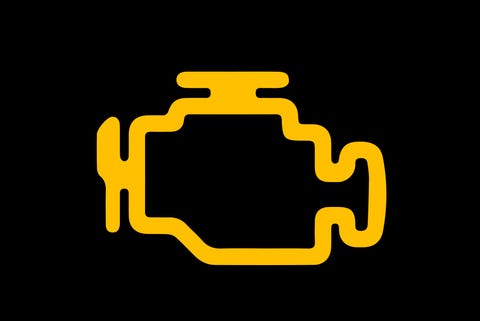


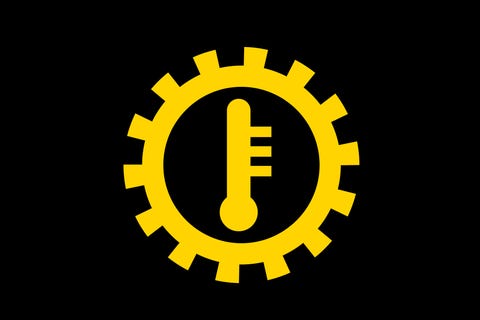

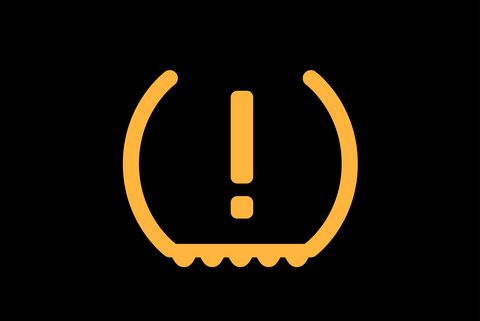



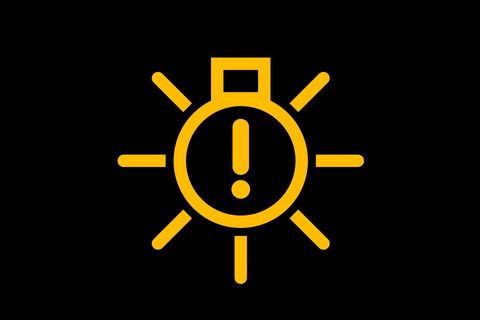
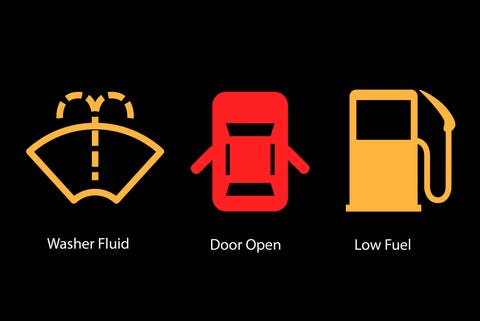















0 Response to "Dashboard Warning Lights Explained - Car and Driver"
Post a Comment